Tests performed during the heavy maintenance (2007.06.20)
Contents
Goals
Identify the origin(s) of the "acceleration" problem in MAMBO2.
- Is the acceleration problem due to a mechanical or electrical process ?
- What is the influence of the driving program on its intensity (Basic/Cascade) ?
- Any difference in the peak noise whether it is an on-off in elevation or in azimuth ?
People
Pico Veleta: DJ, SL, SN, JP
Methods
- An inclinometer was installed on the Mambo2 platform (see picture below) to measrue the vibrations during the measurements.
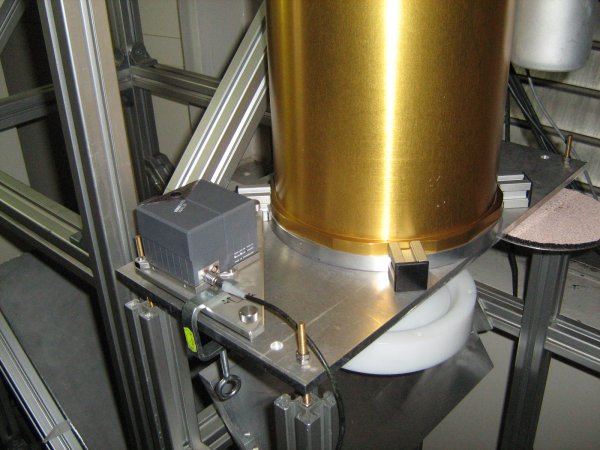
On-off measurements on an absorber. The on-off are done w/o the wobbler taking offset in azimuth and elevation to activate the Basic or Cascade controller. The Basic/Cascade limits are (600,400) arcsec in (Azimuth,Elevation). We point out that these observation are not reproducing exactly the standard bolometer observations with wobbler and a throw < 90 arcsec.
- An extra weight was added on the bolometer platform to check the effects of a change in the platform response to the vibration.
- Oscilloscope monitoring directly on Mambo2 was performed during an on-off measurements.
You can find the list of the absorber on-off scans here
Results
- Inclinometer measurements for two on-off measurements with the Cascade and the Basic controller.
- The first two plots show the trajectory of the antenna during an elevation scan using the Cascade and the Basic controller (Note the much higher on-off amplitude of the scan when using the Basic controller).
- The next two plots display the associated commanded signal applied to the servo control loop. Even if the Basic controller has generally a smooth response, there are some glitches (indicated by arrows) when switching from the Basic to the Cascade controller.
- The last two plots are the actual reading from the inclinometer for the previous scans. It is evident that the peaks are stronger when the Cascade controller is used and that the peaks during the Basic controller scan are mainly due to the glitches mentioned before.
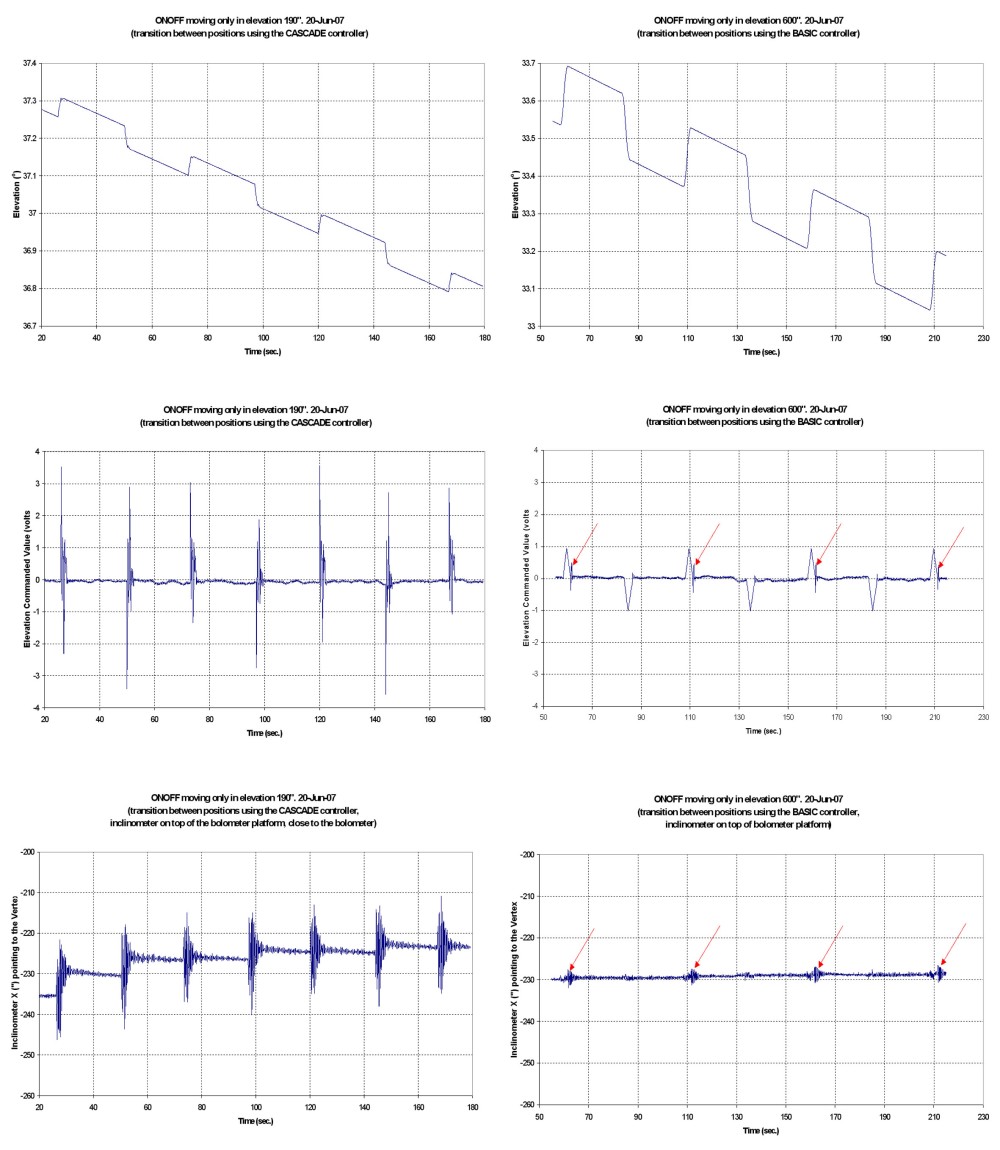
The Basic controller leads to movements smoother than with the Cascade controller. On the bottom panels the inclinometer measurements indicate excursion on the bolometer platform about 10 times larger with the Cascade controller than with the Basic controller.
- On-off measurements with the offsets in elevation: 360" (scan 47, Cascade) and 440" (scan 50, Basic)
Cascade controller: scan 47 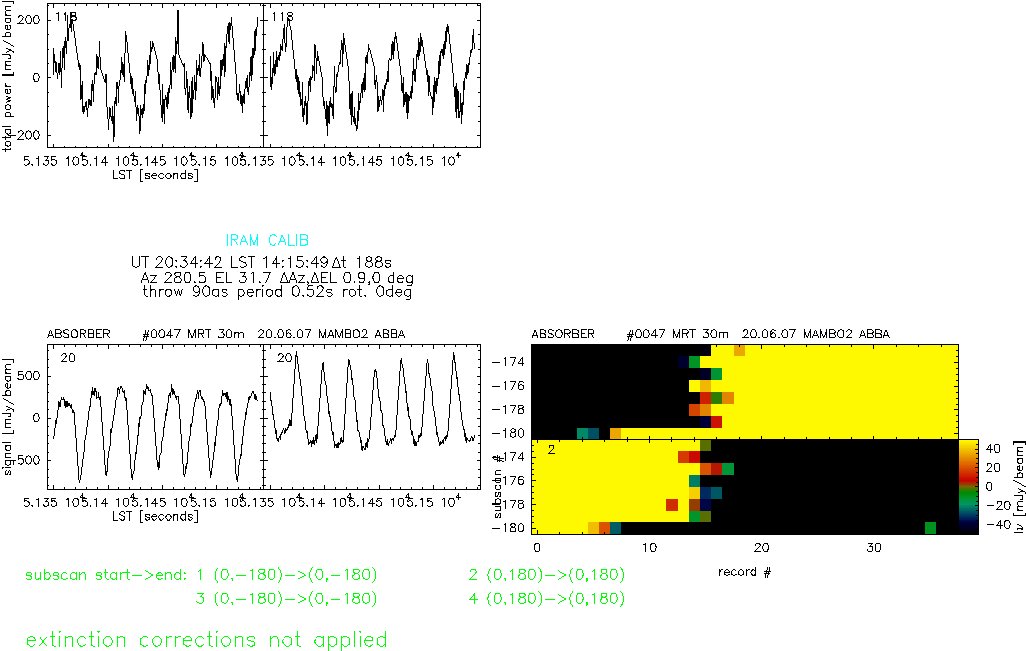
Basic controller: scan 50 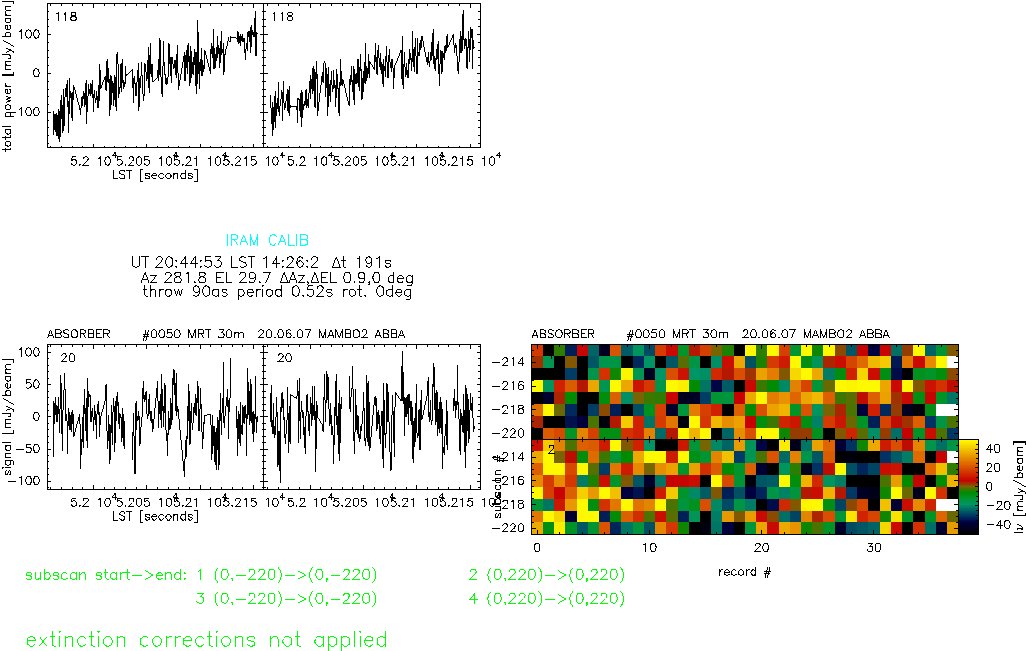
The tests showed (surprisingly?) that the peak noise was much stronger (~5-10 times) with the offsets in elevation than in azimuth. Without extra-weight on the platform the maximum peak noise reached 1 Jy in elevation, For the basic/cascade tests we used elevation offsets.
All the measurements have shown a larger peak noise with the Cascade controller (offsets<400arcsec) than with the Basic controller. Nevertheless the peaks of noise are not completely suppressed with the Basic controller but are much lower as shown on the scan 50.
- An extra weight was put on the bolometer platform (scan 51)
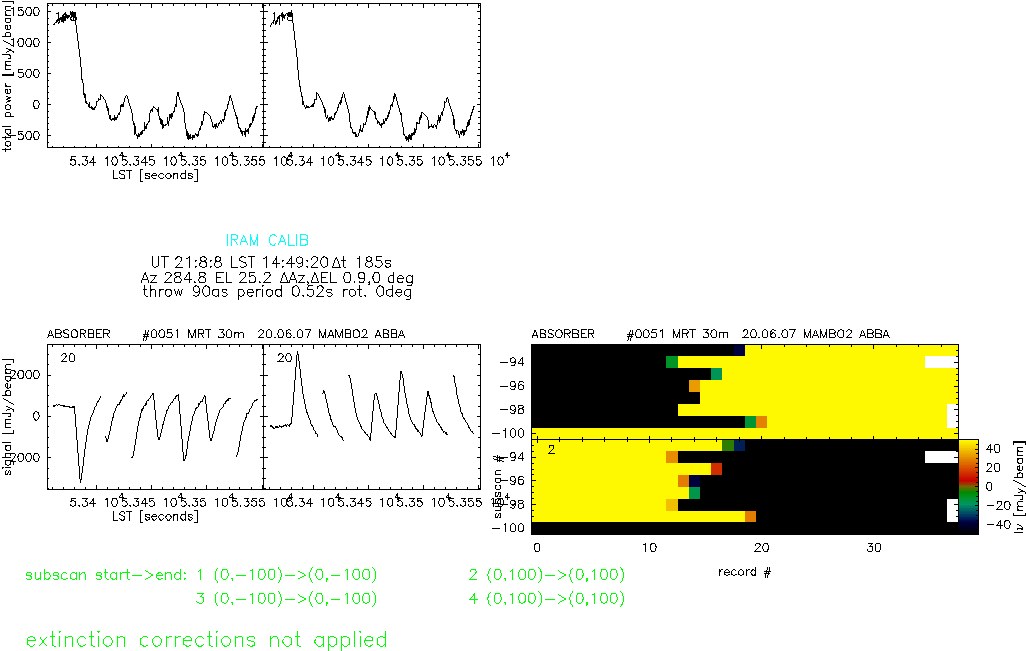
The add of an extra weight on the bolometer platform changed the response of that platform to the vibrations. In case of "acceleration" peak due to electrical leakage the behavior of the noise should be similar. But the scan 51 showed a peak of noise much higher (~2Jy), which seems to corroborate the the explanation of mechanical origin for the "acceleration" problem.
- Measurements of electrical peak with the oscilloscope during an on-off measurements with the offsets in elevation (scan 53).
No correlation was found between the beginning of the scans where the extra noise peaks appeared and the electric activity. A peak frequency of 5 sec was observed but which may be related to the air conditioned system.
These measurements confirm the mechanical origin of the "acceleration" problem.
Scan summary
Conclusions
- Tests performed with Mambo2 using on-off measurements on an absorber w/o wobbler. The offsets allowed to activate Basic/Cascade controller.
- The inclinometer measurements on the bolometer platform indicate a much smoother behavior of the Basic controller than the cascade controller.
- The "acceleration" problem is much more severe with the offsets in elevation than in azimuth (factor 5-10). Reason is not known.
- The "acceleration" problem is attenuated strongly with the Basic controller.
- No electrical interference was found that could explain the observed behaviour of the bolometer.
- The measurements with an extra-weight on the platform or with the oscilloscope seem to discard an electric origin for the "acceleration" problem.
![]() These observations do not reflect the real ones with Mambo2. Obviously these measurements have no statistical meaning...
These observations do not reflect the real ones with Mambo2. Obviously these measurements have no statistical meaning...